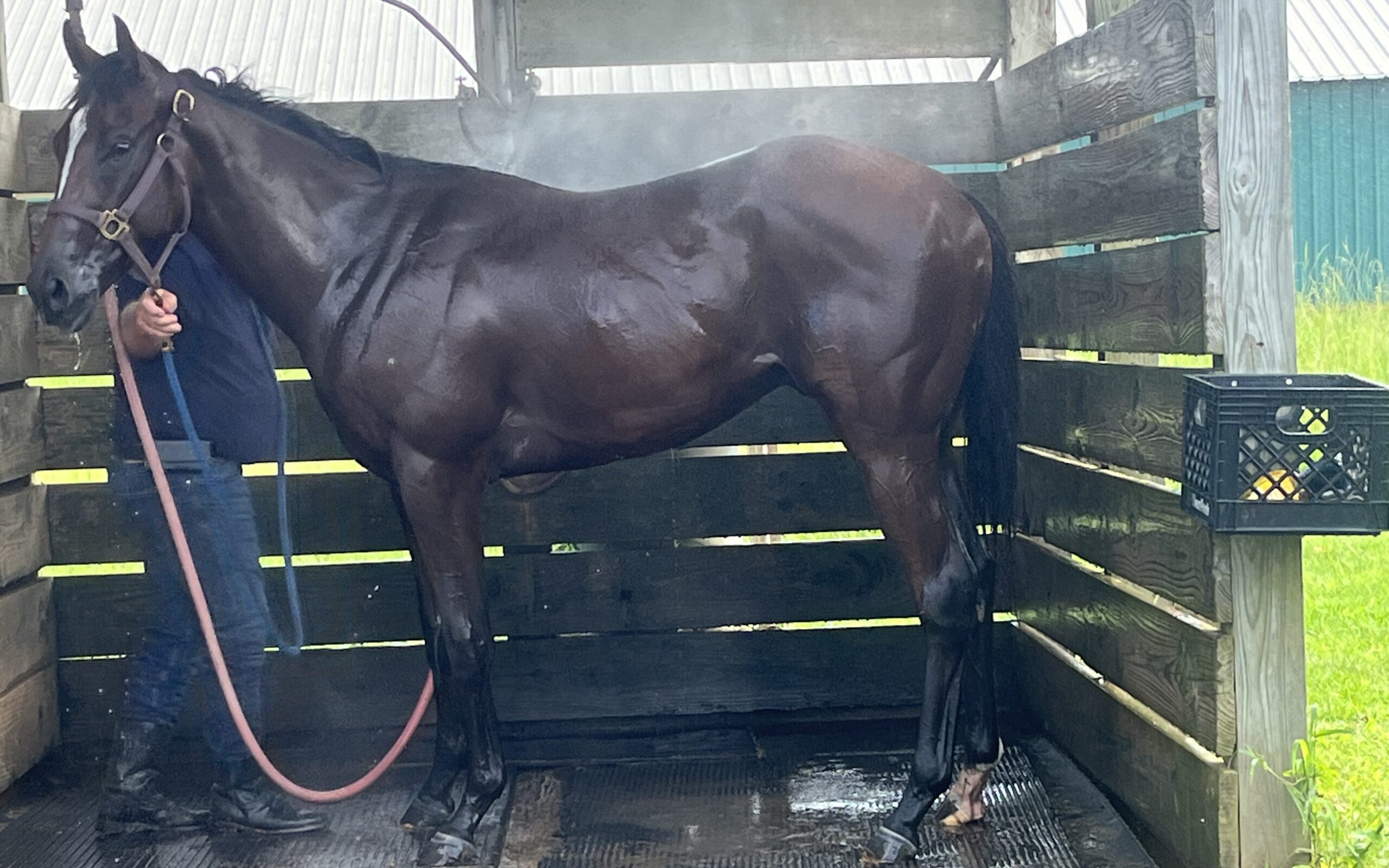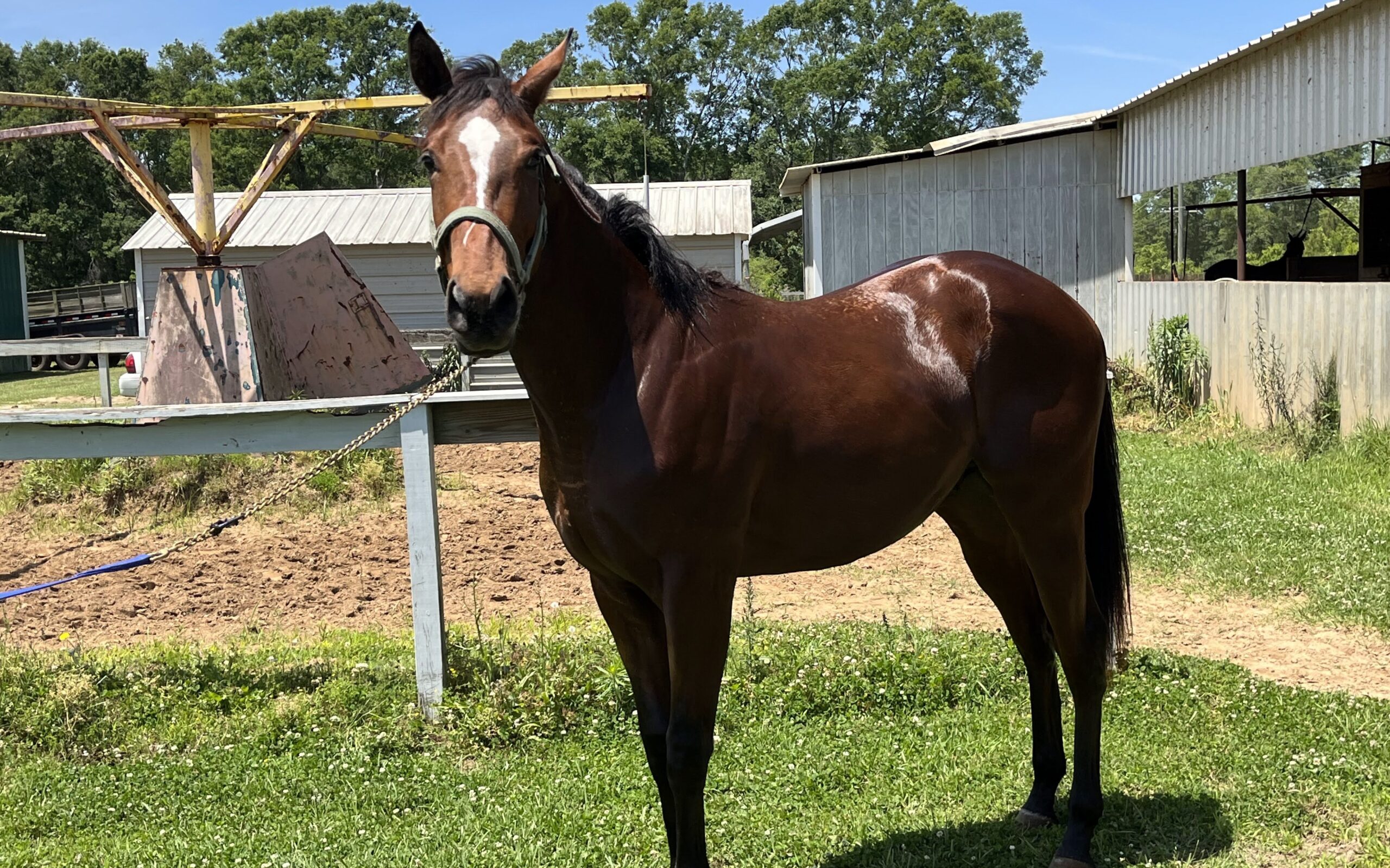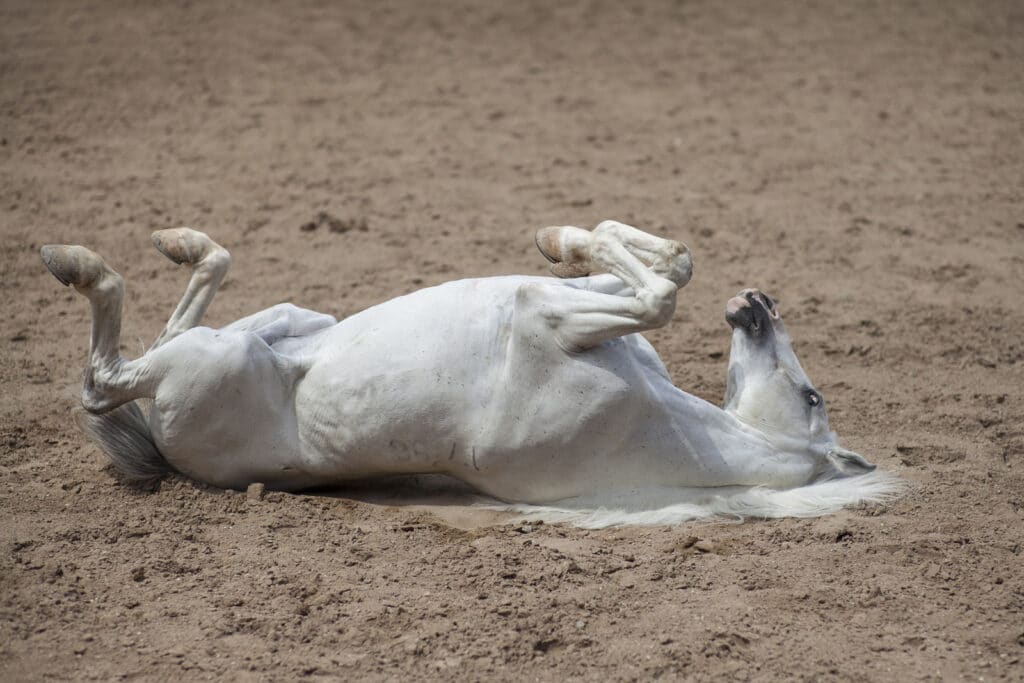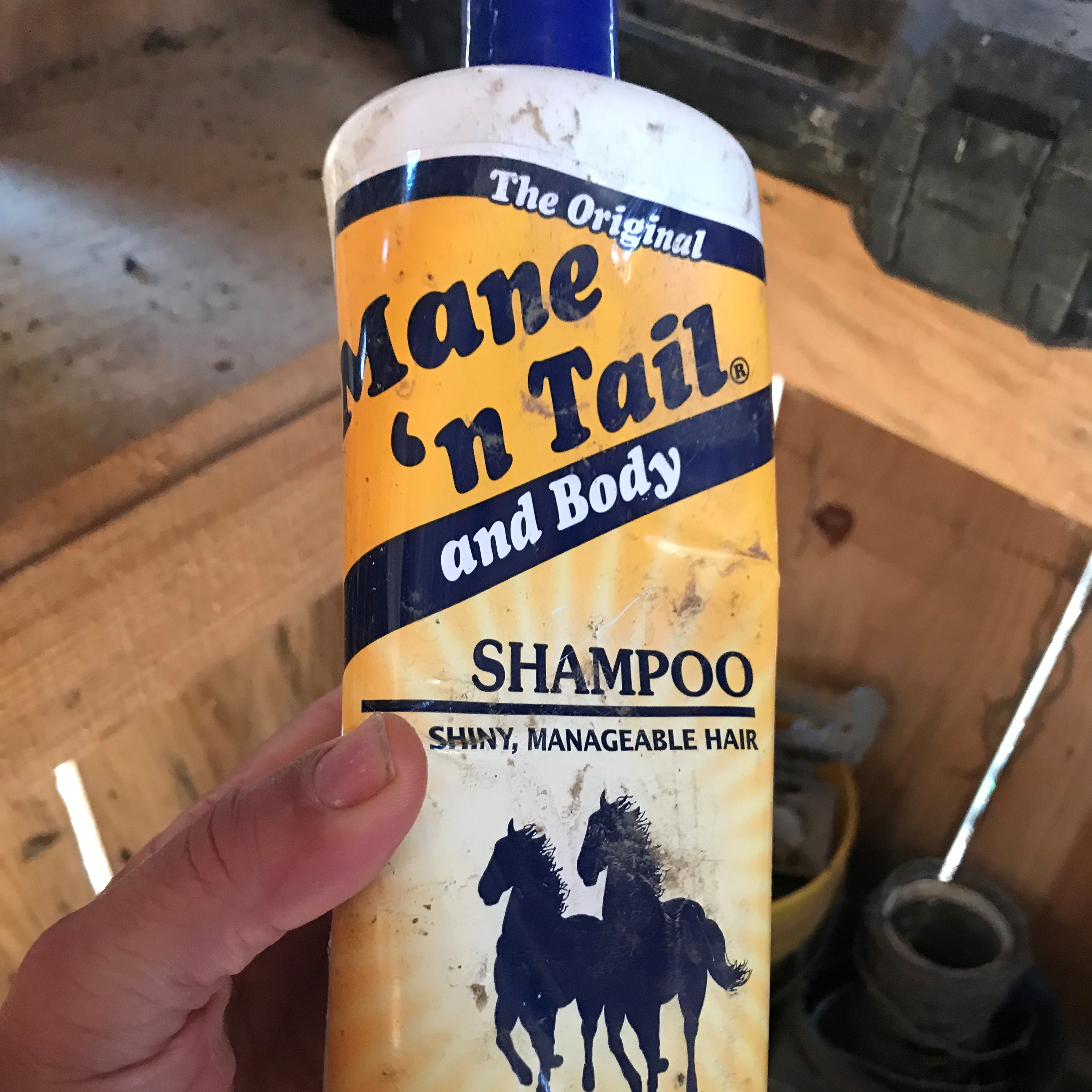Last updated: May 2, 2023
Any links on this page that lead to products on Amazon are affiliate links and I earn a commission if you make a purchase. Thanks in advance – I really appreciate it!
“Do horses need baths?” was one of the first questions my friend asked me after buying his first horse. I advised him to hold off on the baths for the winter season and decided to write a post on the topic to help him and others wondering the same thing.
Horses do not need regular baths to stay clean; usually, grooming is enough to keep a horse clean and healthy. But baths are useful to cool a horse after strenuous work, eliminate stubborn stains, and brighten its coat for an event or show.
Some horse owners bathe their horses weekly, while others go for monthly baths. Yet, many horse owners don’t bathe their horses at all. So, which is best for you? Keep reading to learn when or if your horse needs a bath, how to bathe horses, or clean them without bathing.

How Often Should Horses Be Bathed?
As horse owners, we care about keeping our horses clean and healthy. But sometimes, keeping their coats shiny and clean don’t go hand in hand, especially if you are bathing them every few days.
From twice a month to twice a year, you can bathe your horse any number of times. How often your wash your horse depends on the climate, what you’re doing with your horse, barn conditions, the horse’s coat color, and whether or not you plan to enter your horse in a competition.
But the controlling factor is your personal preference. We typically wash our horses after strenuous workouts; this allows us to cool the horse and check its legs for soreness, swelling, and injuries.
Horses don’t always need a bath to be clean; a good brushing and rub-down will usually be sufficient.
Event schedule factors into the number of baths
If you plan to take your horse to a show or competition, you can plan baths around that time—usually, a day or two before a show is an excellent time to bathe your horse.
For horses, we wash the day before their show; we keep them in a stall overnight and usually cover them with a blanket. The blanket protects their coats if they decide to roll around.
As you know, on show day, there are so many things to do, so it’s nice to have their bath out of the way.

Your horse’s coat color may influence the frequency of its baths.
Horses with lighter colors tend to get dirtier more easily and quickly than dark-colored horses, requiring baths more often, especially if you care how they look.
Personal Preference
Some horse owners like regularly bathing horses and prefer baths over other methods of cleaning. If the temperature is not too low and you use mild shampoos and good conditioners, you can opt for more frequent baths.
My daughter washed her horse twice on the days she showed her horse. She had a paint mare that glowed with good washing, so she washed it before and after each competition.

Should you bathe a horse in the winter?
Bathing horses in the winter can be a tricky issue. While it’s true that horses don’t need baths as frequently in the winter months, there may be times when it’s necessary to give a horse a bath, even during the colder months.
However, it’s generally not recommended to give horses a full bath during freezing temperatures or when the weather is very cold and wet. This is because wet hair can take a long time to dry in colder temperatures, which can cause horses to become chilled and uncomfortable.
In addition, horses have a natural winter coat that helps protect them from the cold. Wetting the coat can damage the natural insulation provided by the coat, making it harder for the horse to stay warm.
However, there may be some circumstances where a horse needs to be bathed during the winter months, such as when they have become excessively dirty or sweaty after a workout or training session.
In these cases, it’s important to take extra precautions to keep the horse warm and dry, such as using a heated barn, hot water, or a drying blanket. It’s always best to consult with a veterinarian or experienced horse trainer before deciding to bathe a horse in the winter.
They can provide guidance and recommendations based on the specific needs and health of the horse and help ensure that the horse stays warm and comfortable even during colder temperatures.
After training our horses in frigid weather, we typically put our horses on a walking wheel at a slow pace to dry them before returning them to their stall. You can avoid bathing until the weather improves and opt for grooming, spot-cleaning, or using a wet sponge to clean your horse instead of bathing it.
Summer baths for your horses.
During summer, baths can be more frequent as the temperature rises. Still, sometimes, such as after a sweaty ride, rinsing with water helps cool a hot horse work and is a better alternative to bathing with shampoos and conditioners.
You want to avoid using soaps too often because they often contain harsh chemicals that can dry out the natural oils from your horse’s skin and make its coat brittle. A good rinse with water and a brush should be sufficient to clean your horse and not dry out your horse’s skin.
So limit the number of baths with soap to keep your horse’s skin and coat healthy and looking their best.

How Do You Bathe a Horse?
You will need some supplies for bathing a horse, such as horse shampoo, a conditioner, a sponge, a curry comb, a mane comb, and a sweat scraper.
It would help if you start by securing your horse; we use cross ties. Next, use the curry comb to scrape off dirt from their skin and hair. With the mane comb, detangle the hair in the horse’s mane and tail.
Clean the horse’s face using a wet sponge, careful not to get water in their eyes or ears. Avoid putting soap or shampoo on their face, and use a clean, damp sponge as often as needed.
Next, use a hose to wet the horse, starting from the horse’s legs before moving to the rest of the body. Now, either dilute the shampoo by mixing it with a bucket of water or directly apply small amounts to a wet sponge.
Rub the shampoo in your horse’s coat until it foams. Then rinse off with water. It is better to shampoo and wash small sections than the whole body at once, as shampoo can dry when left on for too long.
Ensure you rinse out all the shampoo, as the chemicals can damage the horse’s coat if left in. The next step is to dry the horse thoroughly. You can use a sweat scraper to squeeze out excess water or use clean towels.
Comb through the horse’s mane with your fingers and then the mane brush. The final step is to wash the horse’s tail by picking up a bucket of water and swishing the tail inside to squeeze out dirt.
Mix in some shampoo with the water to ensure the tail is squeaky clean. Clean the top of the tail with a sponge. You may have to use several buckets of water to ensure the tail is clean. Dry it off with a towel and then either turn out the horse to graze or put it on a walker until it’s completely dry.
Is It Okay to Wash a Horse with Cold Water?
We have hot and cold water taps at our barn to adjust the hose’s water temperature. When I rinse a horse, I typically use lukewarm water if it’s chilly outside. But in the summer, I wash them with cold water.
It is okay to wash a horse with cold water during the summer. However, horses can get sick if washed with cold water during winter. So you should either avoid giving them baths during winter or only use warm water and then dry them off properly afterward.
What Is the Best Shampoo for Horses?
Horses require special shampoos that can clean their body and hair but not strip off any essential oils from their coat. Some such shampoos are available in the market.
I use the Mane ’n Tail & Body Shampoo and Showsheen for washing my horses. Both are reasonably priced, and you find them at most western supply stores, Tractor Supply, and Amazon.
Mane and tail shampoo has been around for a while, does a good job, and is usually the cheapest shampoo on the market for horses. If you’re interested in learning more about it, then read what customers have to say.

Why Do Horses Roll After A Bath?
Horses roll on the grass, mud, or fresh shavings to enjoy and groom themselves. They also roll to dry off their sweat and get rid of itching.
After a bath, horses roll to dry off the moisture from their coats. They also do it to restore things to “normal” – they don’t like feeling too clean and want their skin to feel just like it did before bathing.
To avoid your horse from rolling in the mud after a bath and wasting all that effort you put in, you can keep it in a clean stall until it is dry.
How Do You Clean a Horse Without a Bath?
During winter, horses’ coats often grow long and thick to provide insulation from the cold. That means that sweat and dirt can get caught up in their coats, which needs cleaning.
If you don’t want to bathe your horse for fear of it catching a cold, which is a real possibility, you can try some bath alternatives. Using a currycomb, you can loosen dirt particles from your horse’s skin and hair. Then you can use a vacuum to remove all the dust and dirt from the hair.
Using a commercial product, you can also use the teeth on an open-shedding blade to scrape off caked mud or go for spot cleaning. For deep cleaning your horse, you can go for hot toweling. You will want a bucket of warm water, clean towels, a spot-cleaning product, or a waterless shampoo.
First, thoroughly curry and brush your horse, then apply a cleaning product to either specific stains or the whole horse if it is incredibly filthy. Massage in the product and then dunk a towel in the warm water, wring out all the water, and then wipe down the horse with it.
I wrote an article you may find helpful on why horses need to be brushed. You can read it by clicking on this link: Why Do You Need to Brush a Horse Before and After Riding?
Below is a YouTube video showing how to bathe a horse.
Related articles:
- Can you Straighten a Horse’s Mane and Tail Hair? 9 Tips
- Short Tails on Horses: Practical Basis or Cosmetic Reasons?
- Why do horses have manes?
- Why do horses lay down, don’t they sleep standing?

About the Author: Miles Henry
Lifelong Horseman | Racehorse Owner | Published Author
Miles Henry brings over 25 years of hands-on experience training and owning Thoroughbred racehorses. Raised with Quarter Horses and Appaloosas, he’s spent a lifetime learning from horses—on the track, in the barn, and in the field. Today, he runs a small but successful racing stable in Louisiana and shares real-world insights on HorseRacingSense.com, helping horse owners, fans, and bettors navigate the sport with confidence.
📚 Books: View Miles’s books on Amazon »
🎧 Podcast Guest: Animal Tales Ep. 32 |
YouTube Interview
📩 Newsletter: Sign up for racing tips and horse care advice »
🔗 Follow Miles:
Twitter |
Facebook |
YouTube



